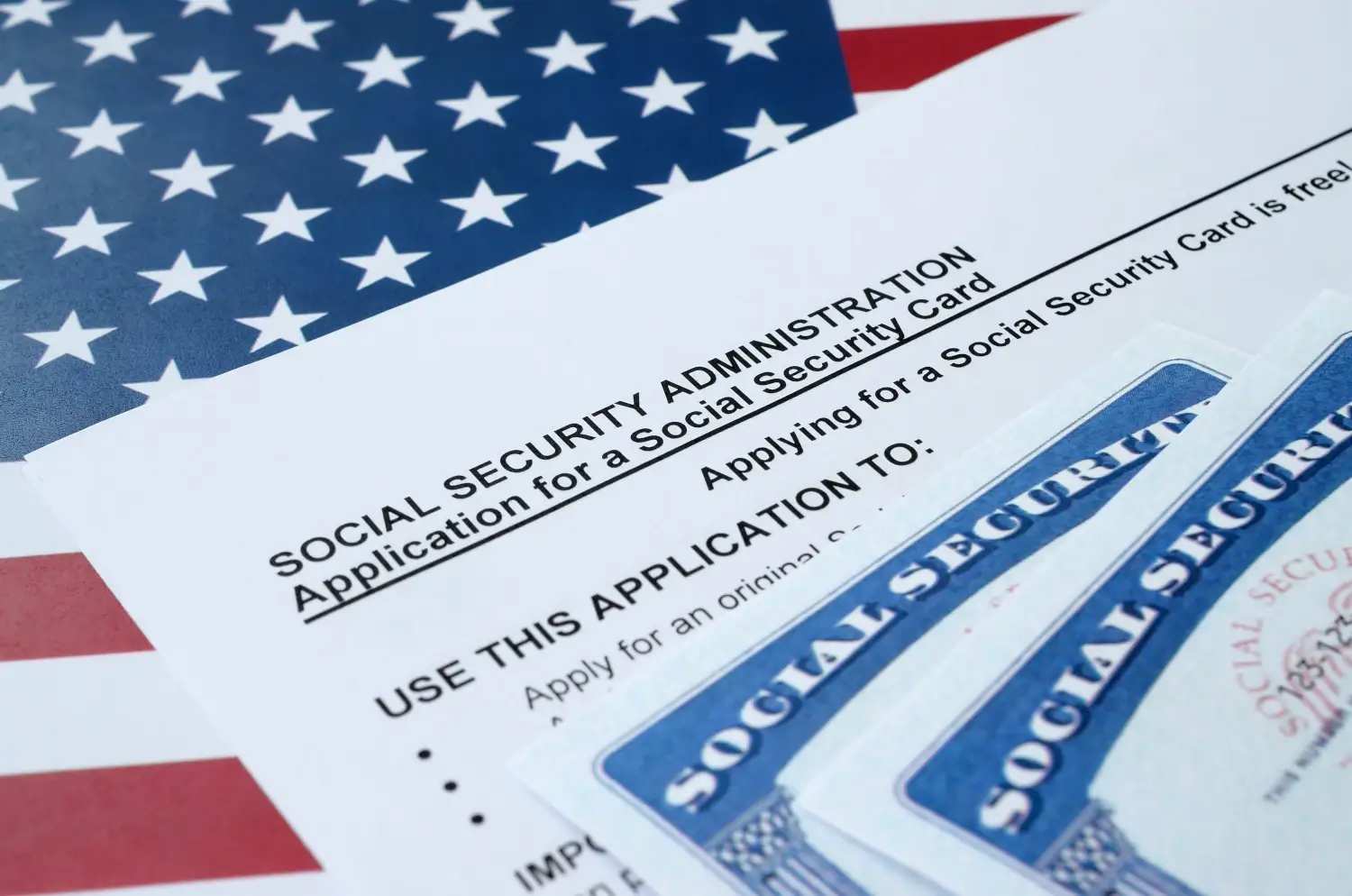How to Protect Yourself from Social Security Scams
Julianne Subia
Reading time: 11 minutes

“The moment you receive this message, I need you to get back to me on my department division toll-free number,” says a recorded voicemail message from a robocaller pretending to be from the Social Security Administration (SSA).
This is the sound of a social security scam call. In the three months before November 2020, almost half of all Americans had fallen victim to these fraud schemes. In total, victims lost nearly $45 million over a shocking 718,000 social security scams that took place that year.
In this blog, we’ll tell you all you need to know about what a social security phone scam is, how try to steal your social security number, and the ways in which you can prevent them from happening to you.
We’ll answer the following questions:
- What is a Social Security Phone Scam?
- How do Social Security Phone Call Scams Work?
- How do Social Security Scammers Obtain Personal Data?
- How to Protect Yourself From a Social Security Call Scam
- How to Enhance Your Online Privacy
- How to Tackle the Root Cause of the Problem
What is a Social Security Phone Scam?
Social security scams take place when fraudsters call a person’s phone number claiming to represent the Social Security Administration (SSA) and pretend there is a problem with your social security number or account. Often, scammers will claim they are compromised because of suspicious, improper, or illegal activity.
Sometimes, fraudsters will take an alternate approach and pretend to help victims by offering to increase their benefits, protect their assets, or deal with identity theft.
To resolve this, these criminals will demand payments or victims’ social security numbers, threatening them with arrest, fines, or suspension of their social security account if they fail to provide them.
Scammers who make these calls will often use a threatening tone of voice and language to intimidate their victims into taking immediate action. Scam social security calls often target vulnerable senior citizens, particularly those who depend on social security benefits.
Besides phone calls, social security scams can also take place via text messages asking recipients to call back in order to avoid a fine or arrest.
Social security scam phone calls are just one nuisance call of the many types that exist. Other scams involve standard robocallers, telemarketing callers, and fraud callers who impersonate IRS agents asking for bank details.
How do Social Security Phone Call Scams Work?
Scammers make money from “fines” or payments that their frightened victims make in order to save themselves from the “legal action” they believe they could face.
If this wasn’t suspicious enough, fraudsters often demand that payments be made via retail gift cards, prepaid debit cards, wire transfers, internet currency, or mailing cash.
If they obtain a victim’s social security number, this personal data can help scammers “hijack” victims’ social security accounts and open new ones in order to file fraudulent tax returns and steal social security benefits.
How do Social Security Scammers Obtain Personal Data?
It’s common for fraudsters to legally acquire victims’ personal phone numbers through data broker websites, or companies that collect and sell information about individuals.
Besides phone numbers, data brokers also collect all sorts of personally identifiable information (PII): from names to ages, social security numbers, addresses, photos, email addresses, details about a person’s marital status, occupation, relatives, and social media accounts.
Being a data broker involves trawling online public records, social media profiles, and self-reported information online for as many personal details as possible and using them to build personal profiles.
How to Protect Yourself from a Social Security Call Scam
1. Hang Up Immediately
If you suspect you’ve answered a phone call from a social security scammer, the best thing to do is cut the call off as soon as possible. Learning to recognize the intimidating tone of voice scammers take with their victims is important because this is an immediate indicator that the call is a scam.
As a general rule, it’s also helpful to treat all unwanted calls as suspicious and not to return any unwanted calls.
The SSA guarantees it will never call people to ask for their social security number, pay money, verify bank information, or threaten benefits. It also recommends that if you receive a questionable call, you should report it to the Office of the Inspector General straight away. And if you have suffered a financial loss, the SSA encourages victims not to hide it out of embarrassment, because the story could help prevent others from falling for similar scams.
2. Set up an Online SSA Account
If you set up an online account with the SSA, you will be able to log in immediately and see whether there are any problems with your account yourself. The SSA has extra security mechanisms in place such as two-factor identification to protect against potential identity fraud online.
3. Ask For Advice
The SSA recommends that before making any large purchases or important financial decisions—such as wiring money—you should solicit the advice of a trusted friend or family member.
This way, if a scam is about to take place, there’s a higher chance another individual can intervene early and prevent it.
4. Stay Up To Date on Scams
It’s also useful to read up on social security phone scam victim’s stories in news articles so that you can stay clued up on fraudster tactics. This will help you recognize these common behaviors easily in the event you ever receive a social security administration scam call.
5. Activate Call-Blocking Features
Most Android phones come with built-in Google caller ID & Spam Protection to show caller IDs from calls outside of your contact base and flag potential spam calls.
For Apple users, the Silence Unknown Callers feature blocks callers from people outside your contacts, diverting them all to your voicemail.
Some network providers, including T-Mobile, Sprint, AT&T, and Verizon offer both free and paid services to block nuisance calls. These services are useful for identifying and blocking robocalls that do not come from real numbers.
There are also third party apps available that you can download to block spam calls. Most good call-blocking apps such as Hiya and Robokiller require a monthly or annual subscription fee.These apps contain databases of scam caller numbers that they use to check unwanted incoming calls and block them if they correspond to an already-identified spam number.
Users can also add their personal numbers to the Federal Trade Commission’s (FTC) Do Not Call Registry in order to reduce the number of unwanted sales calls they receive, some of which could be fraudulent. The registry also allows victims to report unwanted calls. The FTC reminds individuals that it could take up to 31 days for sales calls to stop altogether.
How to Enhance Your Online Privacy
By regaining control of your privacy online, you can limit social security scammers’ and robocallers’ ability to find your PII online in the first place and use it to contact you.
Here are some best practices you can take to keep your personal data as private as possible online:
1. Make Social Media Accounts Private
One of the easiest ways for data brokers to obtain PII is through public social media profiles that leave everything from emails and home addresses in plain sight. By simply adjusting your privacy settings you can automatically limit the amount of information that criminals can obtain from your profile.
Another tip is to be wary of the information you share in posts on social media and limit the number of users who can see them. On Facebook, for example, the difference between the amount of people who can see your posts if they are limited to just friends as opposed to “friends of friends” could be hundreds of thousands.
2. Keep Contact Info Private
Some websites will ask you to create an online account using personal information in order to use their services. However, if you don’t trust a particular website, it’s a good idea to give out fake information that scammers won’t be able to use to take advantage of you.
This includes fake answers to security questions that will enable you to log into certain accounts. Some will ask questions such as your mother’s maiden name, which could then become publicly available online.
Sites like Blur can help you stay anonymous online by generating new email addresses and passwords each time you are asked to create a new online account. Blur then stores all this information safely and privately, all in one place.
3. Use Two-Factor Authentication
Whenever possible, it’s wise to restrict your online accounts just to websites that require you to verify your login details through a two-factor authentication code. This extra level of security makes it more difficult for hackers and scammers to gain access to your personal information.
4. Use a VPN
Virtual Private Networks (VPNs) prevent your internet service provider from monitoring your online activity and selling the information collected—which could include PII—to advertisers and data brokers. VPNs also prevent hackers and identity thieves from intercepting your browser activity.
A similar outcome can be achieved by using a private or incognito browser. These prevent websites from tracking your online activity and saving your cookies, temporary files, and browser history.
5. Use a Tracker Blocker
The internet is teeming with hidden “tracker” companies including ad networks, social networks, and data collection agencies that make money by recording your activity and then targeting you with adverts or selling your data.
However, there are blockers such as Blur that exist to stop this tracker activity.
6. Use a Private Email Client and Encrypted Messaging Apps
Some messaging services and email providers, including Google and Yahoo, can read the personal emails you send and use any personal information they contain for ad purposes.
Using a private email service like ProtonMail or an encrypted messaging app such as Telegram can help you keep details of your personal correspondence strictly private between yourself and the recipient.
7. Delete EVERYTHING
The ultimate way of preventing fraudsters from obtaining your PII online is to remove data brokers’ access to it. In other words, by deleting it.
You can either do this manually with the help of our step-by-step guides by requesting that individual data brokers delete your data, or you can sit back, relax, and let us do it for you.
Tackling the Root Cause of the Problem
Instead of sticking a band-aid on the problem of scam calls from social security by taking myriad extra steps to protect yourself online, we believe in tackling this problem where it starts. By taking away fraudsters’ ability to obtain PII from data brokers, you’ll naturally reduce the likelihood of falling victim to a social security scam call.
Here at DeleteMe, we’re experts at removing our customers’ personal information from Google search results. Since 2010, we’ve completed over 29 million data broker opt-out removals because we believe in the right to own, manage, and remove personal information online.
From just $10.75 a month, we’ll remove one person from all major data broker websites for one year. We work by finding your personal information, submitting removal requests to data brokers, and repeating this process every three months to stop data from continuously being updated.
Wrapping Up
Despite the relentless nature of today’s digital world, data privacy is far from being a thing of the past for the team at DeleteMe. Instead, it’s in our DNA.
With 82% of Americans either concerned or very concerned about online privacy, and social security scams affecting hundreds of thousands of people every year, we believe it’s more important than ever to address the connection between these two.
By deleting your personal information and bolstering your privacy online, not only can you prevent unwanted advertisements and stop yourself becoming a victim of hacking, but you can also fend off social security fraudsters looking to steal your money or, worse still, your identity.
Our privacy advisors:
- Continuously find and remove your sensitive data online
- Stop companies from selling your data – all year long
- Have removed 35M+ records
of personal data from the web
Save 10% on any individual and
family privacy plan
with code: BLOG10
news?
Don’t have the time?
DeleteMe is our premium privacy service that removes you from more than 750 data brokers like Whitepages, Spokeo, BeenVerified, plus many more.
Save 10% on DeleteMe when you use the code BLOG10.
















